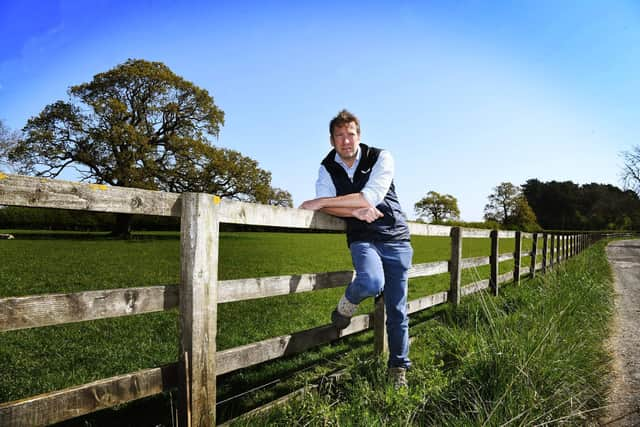The art of foraging and the benefits it can bring - Julian Norton
It’s something I’ve been interested in since a kid; I’m sure the instinct to collect food from nature, whenever it is plentiful, is innate. I can recall autumnal blackberry-picking excursions with my gran when I was a small boy.
We’d try to out-do one another and fill our plastic tubs to the brim. The result, later in the day, was always a pie, crusty and sweet with intensely flavoured juices escaping from any holes and eaten straight from the enamel pie dish. Sometimes apples were involved.
Advertisement
Hide AdAdvertisement
Hide AdI hoped Craig would take me from blackberries and apples – both identifiable by anyone – to the exciting but potential deadly world of mushrooms. The purpose of the day was to film a piece for a new television series with which I am involved. It may be secret at the moment, so I probably shouldn’t spill any beans. I met Craig and he handed me a wicker basket.


I hoped I’d be filling it with wild produce and not spilling any of that either. With his dreadlocks and long, wooden staff, he was the very epitome of a woodsman. I quickly realised he was as knowledgeable as he was enthusiastic as he swooped in on some sorrel. Nestling amongst nettles, the bright and shiny leaves looked a bit like basil and we plucked some for our lunch.
But leaves alone would not satisfy our appetites. What we really wanted were some mushrooms. Craig pointed his stick in the direction of a corner of the wood full of pine trees declaring: “I think there might be some porcini mushrooms over there.”
Porcini is the Italian word for this fungus, literally meaning “little pig.” In England, they are called a cep, or a penny-bun (big ones have a top which looks like a bread bun.)
Advertisement
Hide AdAdvertisement
Hide AdIt didn’t take long before Craig beckoned me over to where he was crouching under the trees. Sure enough, we’d got ourselves a cep. It was small, but quite well formed. “And you’re definitely certain it’s not poisonous,” I asked as he sliced a sliver for me to sample.
It tasted delicious. With food miles of approximately thirty centimetres, it was a mini-meal with no impact on the planet. Already, I was hooked on foraging and wandered off, eyes down in search of more.
Moments later, I’d found another tree with more ceps popping out from amongst the fallen leaves at its foot. Our baskets were filling fast, but Craig explained that the motto of the forager must always be to “just take enough” and to “leave some for others, including the wildlife”.
It was a far cry from the panic-grabbing we’ve seen over the last year or so, first with toilet roll, then with food and more recently with fuel.
Advertisement
Hide AdAdvertisement
Hide AdBack in the kitchen, the mushroom risotto, laced with previously collected dried mushrooms and chanterelle powder, was one of the most mushroom-intense meals I’ve ever eaten. The only ingredients not from within five miles were the rice and the olive oil.
The next morning, whilst walking Emmy, I struck gold again. A patch of gloriously firm, pale golden ’shrooms. I didn’t know what they were, but they looked tasty and I resolved to get a book, identify them then hopefully collect some for my tea.
They looked like ‘Shaggy Ink Caps’. In my new book, there was a smiley face next to them, so I picked a few, feeling reasonably confident I’d got it right.
If there is no Yorkshire Vet column next week, you’ll know I’ve made a huge mistake…
The Yorkshire Vet is on Channel 5 on Tuesday evening at 8pm.
